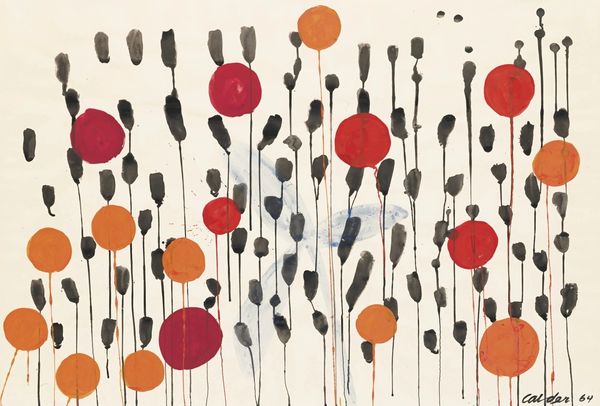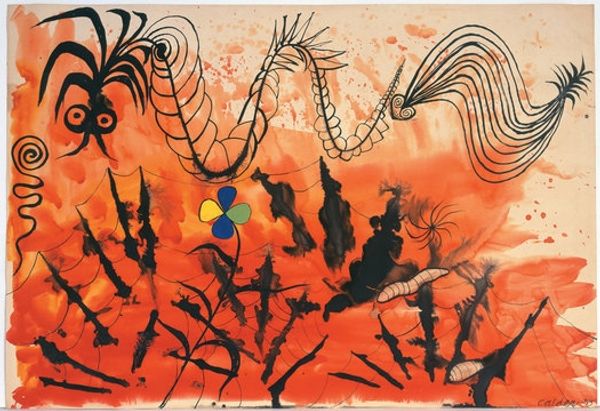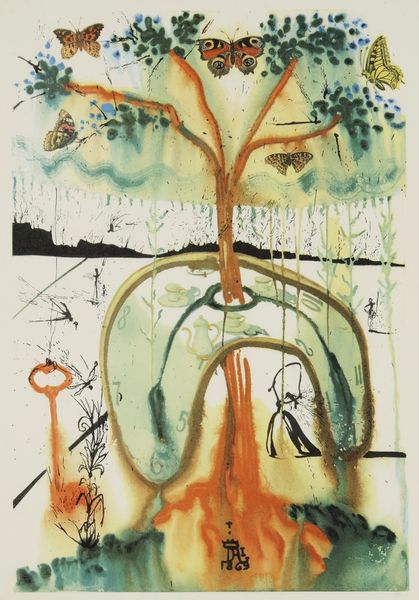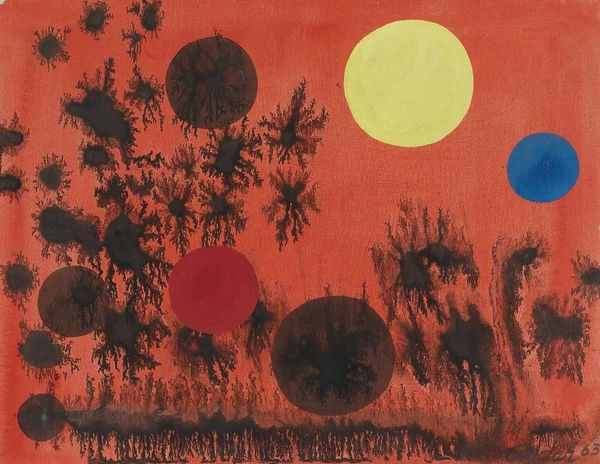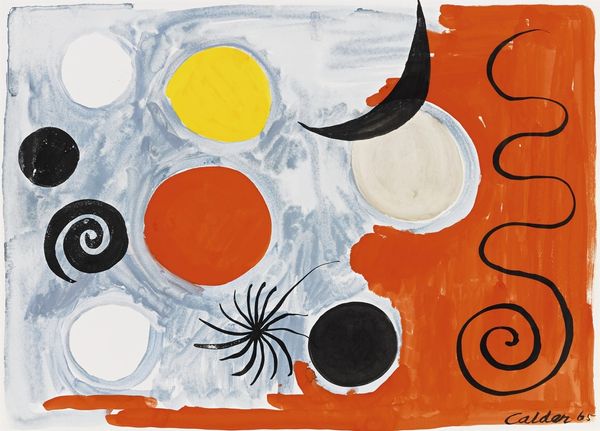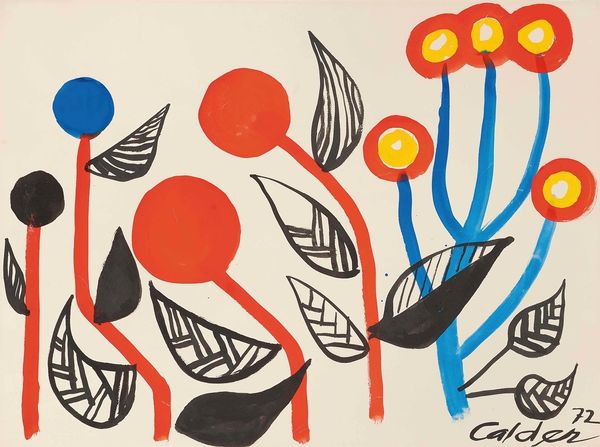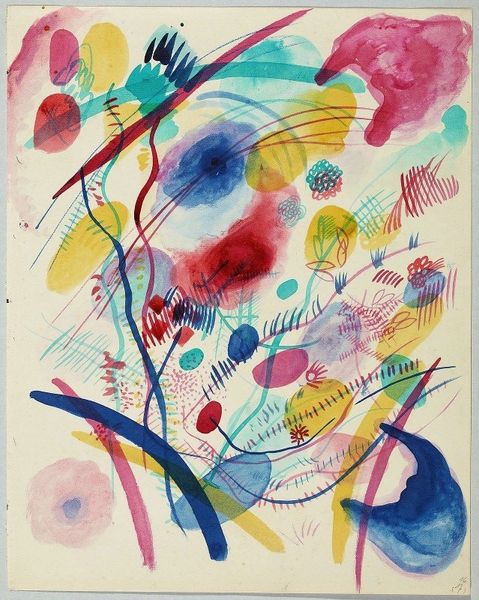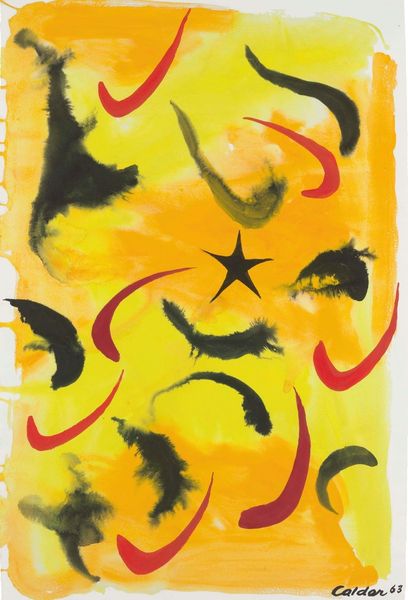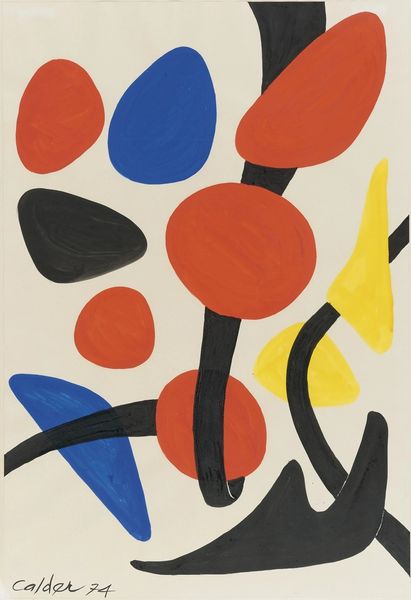
mixed-media, painting
#
abstract-expressionism
#
mixed-media
#
organic
#
abstract painting
#
painting
#
abstract
#
form
#
naive art
#
line
Copyright: Modern Artists: Artvee
Editor: This is Alexander Calder’s “Growth,” created in 1964. It’s a mixed media work, and immediately strikes me as joyful, almost like a botanical illustration gone abstract. What is your take on this piece? Curator: Looking at "Growth," I see a fascinating commentary on the role of public art during the mid-20th century. Calder, while working within the abstract expressionist movement, was also very engaged in public commissions. Editor: How does that influence the work itself? Curator: Think about the societal expectations of art at that time. Abstract art was becoming increasingly prominent in civic spaces, but how accessible was it really to the average person? Editor: I see what you mean. There’s almost a playful quality here, which makes it seem very approachable, but still modern. Curator: Exactly. Calder uses simple forms and vibrant colors—note the stark contrast of orange and black, punctuated by a single blue circle. It’s engaging but doesn’t shy away from abstraction. Do you think this simplicity makes it universally appealing? Editor: That's a great question! I think the simplicity helps, but some might still find the abstraction challenging, since you can't directly read any symbolism into those shapes. Curator: And that's part of Calder’s genius. He bridges the gap, inviting viewers to participate and to form their own connections with the art, regardless of their art historical background. Editor: That is such an interesting perspective. I now view Calder's intent as actively democratizing abstract expressionism via public art. Curator: Precisely! Considering its role within the social context, it gives a different dimension to what otherwise might just be seen as abstract decoration.
Comments
No comments
Be the first to comment and join the conversation on the ultimate creative platform.

